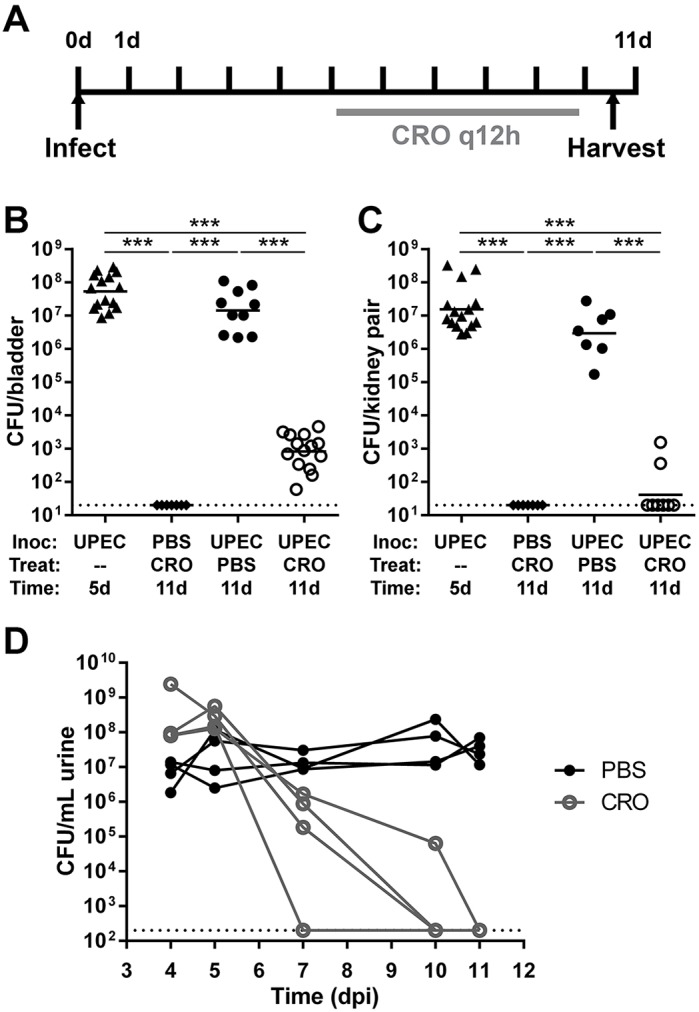Fig. 1.

CRO treatment eliminates renal bacterial burden in C3H/HeN mice with pyelonephritis. (A) Male C3H/HeN mice were surgically infected with UTI89 or PBS and then treated with CRO or PBS for 5 days starting at 5 dpi. Bladders (B) or kidneys (C) were aseptically homogenized and plated to enumerate CFU 24 h after the last CRO injection. Organ titers in 5-dpi start-of-treatment controls (triangles) were equivalent to mock-treated mice at 11 dpi (black circles), whereas CRO treatment (white circles) significantly reduced bladder bacterial loads and sterilized the infected kidneys. Mock-infected mice (diamonds), as expected, bore no bacteria in bladders or kidneys. Data shown reflect the aggregate of three independent experiments (total n=7-15 per condition; ***P<0.001 by Mann–Whitney U-test). Dashed lines in all panels represent the limit of detection; bars indicate the geometric mean. (D) Male C3H/HeN mice were surgically infected with UTI89, then either mock-treated (with PBS; black circles) or treated with CRO (gray circles) starting at 5 dpi. Urine bacterial titers on the indicated days are shown. Solid lines connect corresponding urine titers from each individual mouse.
